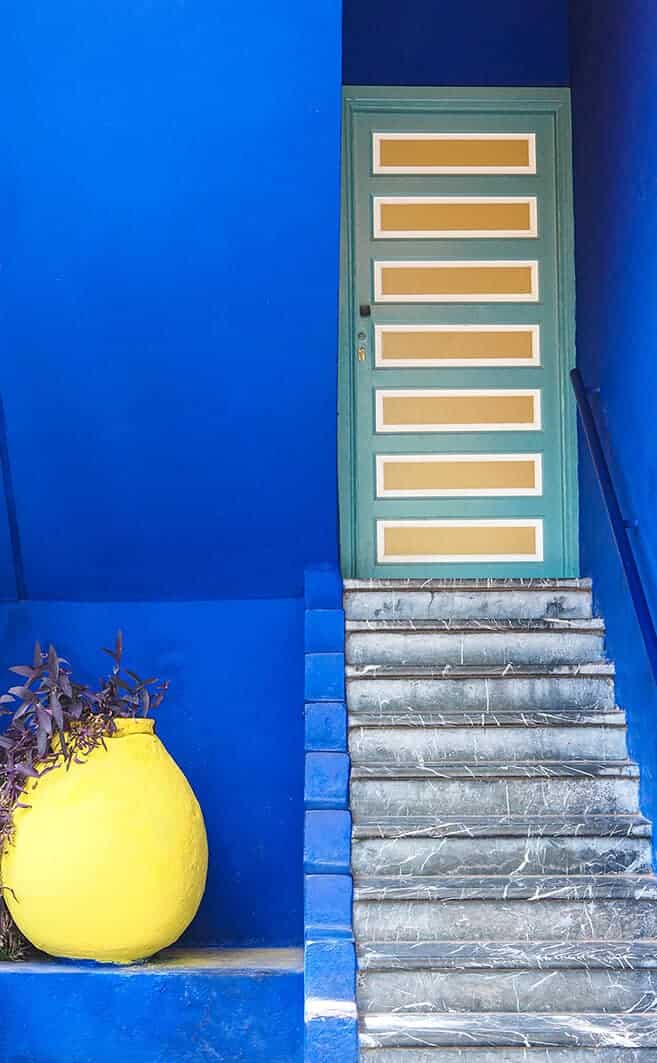Morocco is famous for its vivid blues, from the main house at Majorelle Gardens to the city of Chefchaouen. I wanted to explore this intense colour which appears throughout Moroccan craft.
MAJORELLE BLUE
The original owner and creator of Marjorelle Gardens was the artist Jacques Majorelle and his wife Andrée Longueville. Jacques was a French painter was born in 1886 in France. He began his career as an architect but returned to his first love of painting soon after. On a visit to Morocco in 1917, he fell in love with the country in particular Marrakech.
He was so inspired by the colours and the light that he decided to settle permanently in Marrakech, eventually purchasing an area of land where Marjorelle Garden now sits. He commissioned the French architect Paul Sinoir, to design a Cubist style home on the newly purchased land.


After the villa was built Majorelle decided to re-paint in a blue tone he had seen whilst residing in Morocco. He decided to develop is own pigment in 1937 which took his name ‘Majorelle Blue’ and preceded to paint the house and walls of the gardens this vibrant shade.
Bristol Paints produce Ultramarine paint available on their website.

ULTRAMARINE
Ultramarine is a rich blue pigment which influenced Marjorelle Blue and was used in the creation of International Klein Blue by the artist Yves Klein.
Lapis Lazuli is a blue semiprecious stone which is mainly found and mined in Afghanistan. It has been mined for over 9000 years and was used to create the natural pigment of ultramarine. It was used in oil painting up until the 19th century when the synthetic pigment was created.
The process of extracting pigment from Lapis Lazuli was extremely laborious and exhaustive as the stone is very hard and the extensive range of blues of the rock meant the extracted shade was never a guarantee. Today the stone is used for jewellery and fine craftwork.

Synthetic Ultramarine

Lapis Lazuli
CHEFCHAOUEN


No blog post about Blue in Morocco can ignore the blue city of Chefchaouen in the northwest of Morocco. The city began life as a fortress to fight off the Portuguese. It eventually fell to the Spanish and was part of Spanish Morocco. before gaining independence.
I have not had the chance to visit Chefchaouen yet but it is definitely a must-see for me. As for the blue, there are many theories as to why buildings are blue. Some say it is to keep mosquitos away which is a great reason, some say it is to represent the colour of the sea, some say Jewish immigrants added the blue amongst other theories.
The blue is created by using pigment as a base and adding it to create shades of blue. The colour is unmistakenly Moroccan, toned-down versions of the classic Majorelle blue and ultramarine. It is interesting to see the varying shades interact with each other.
